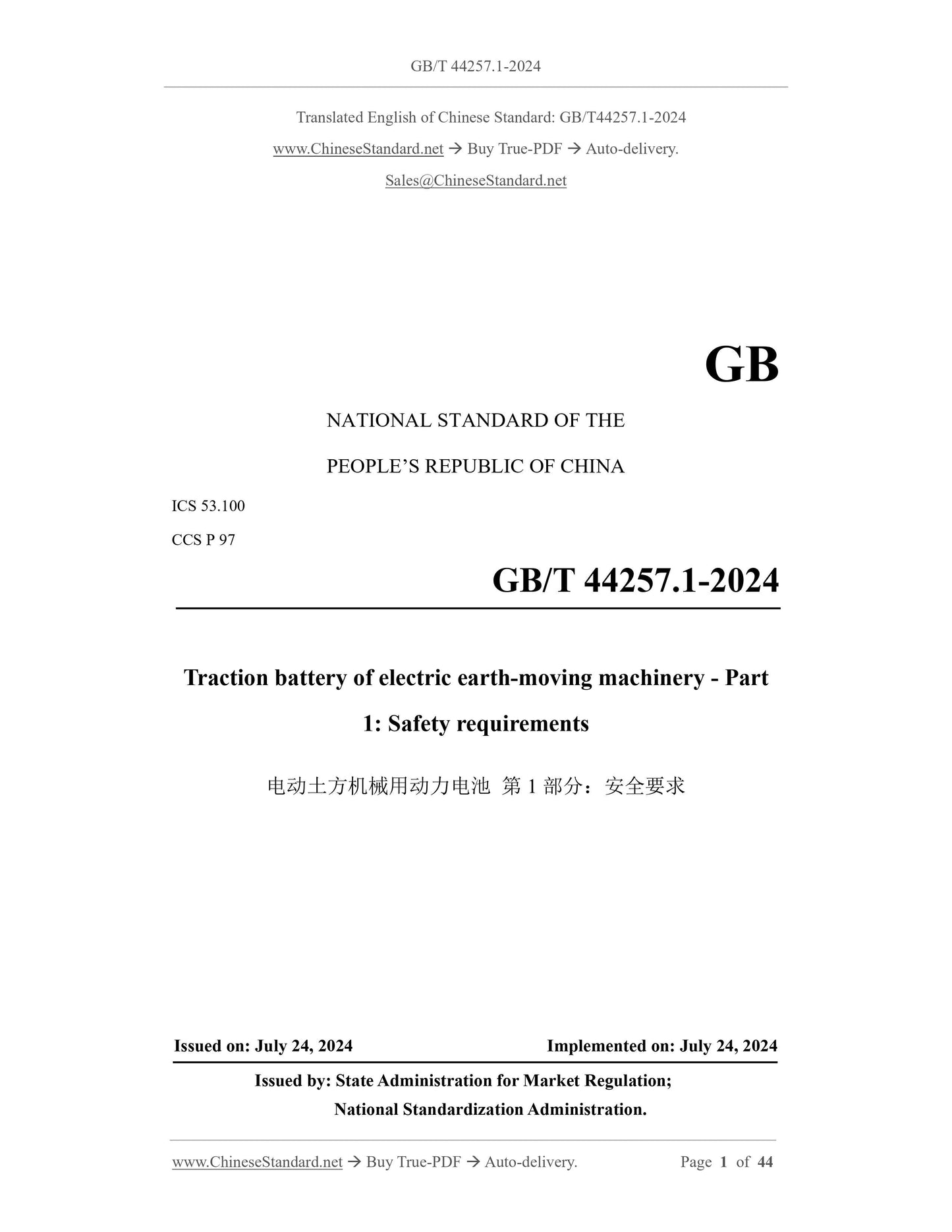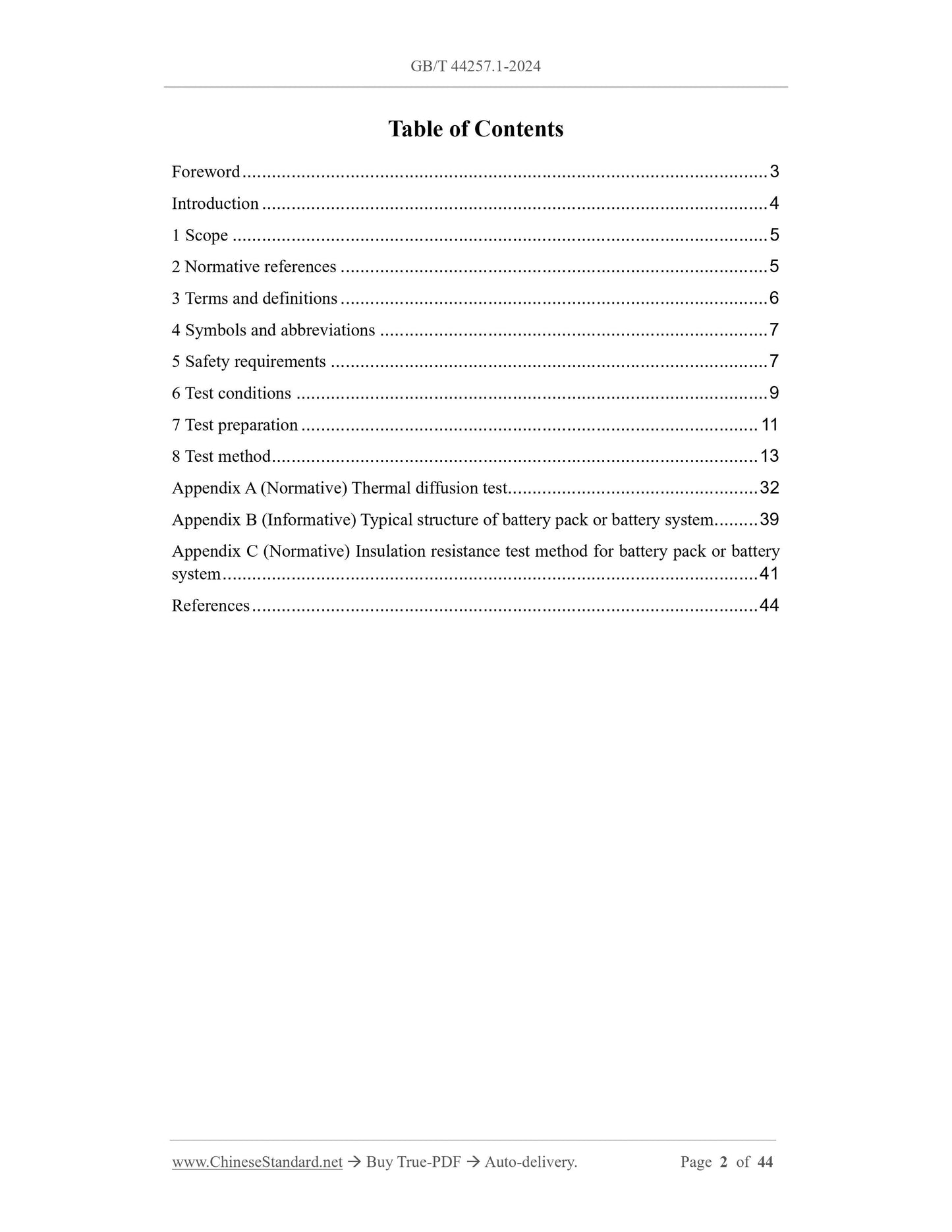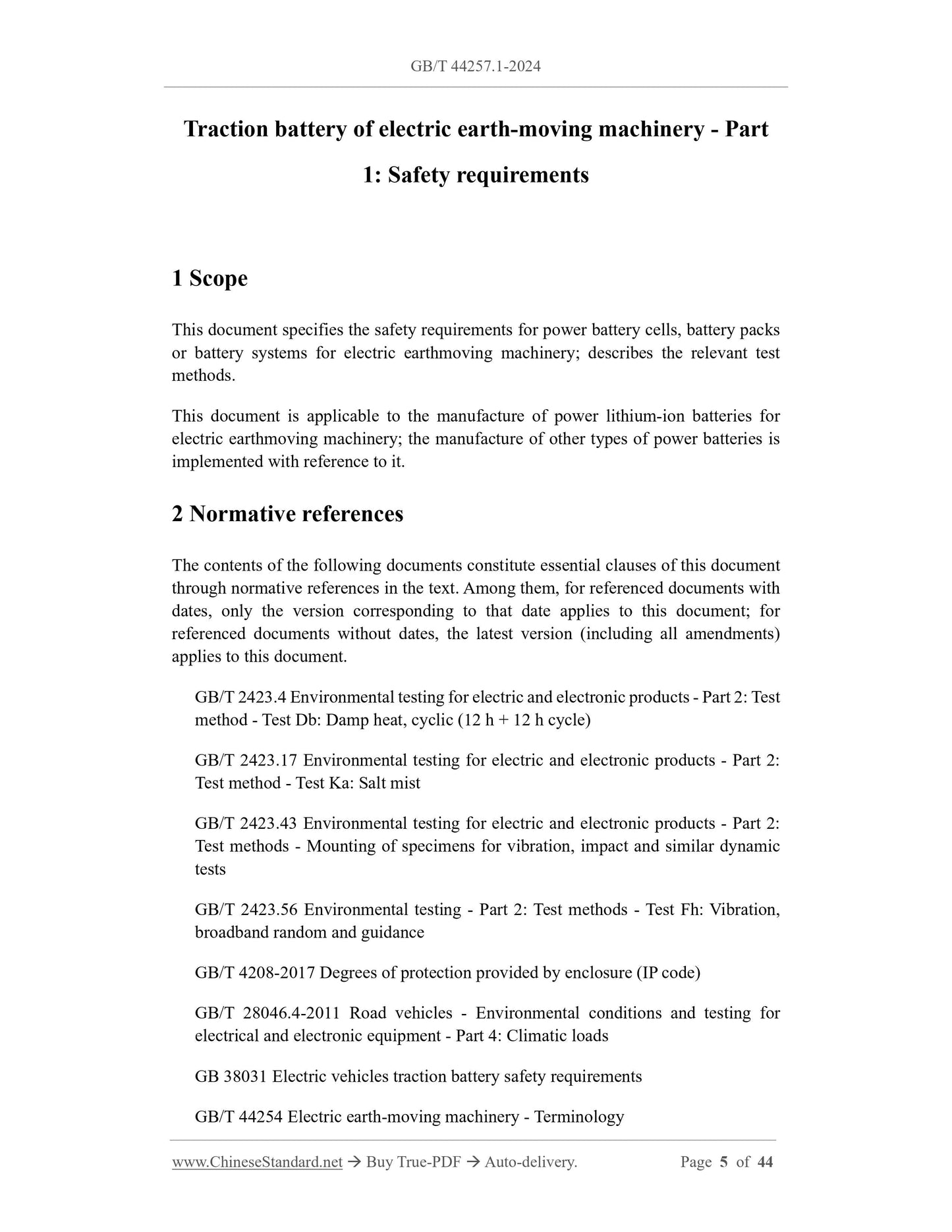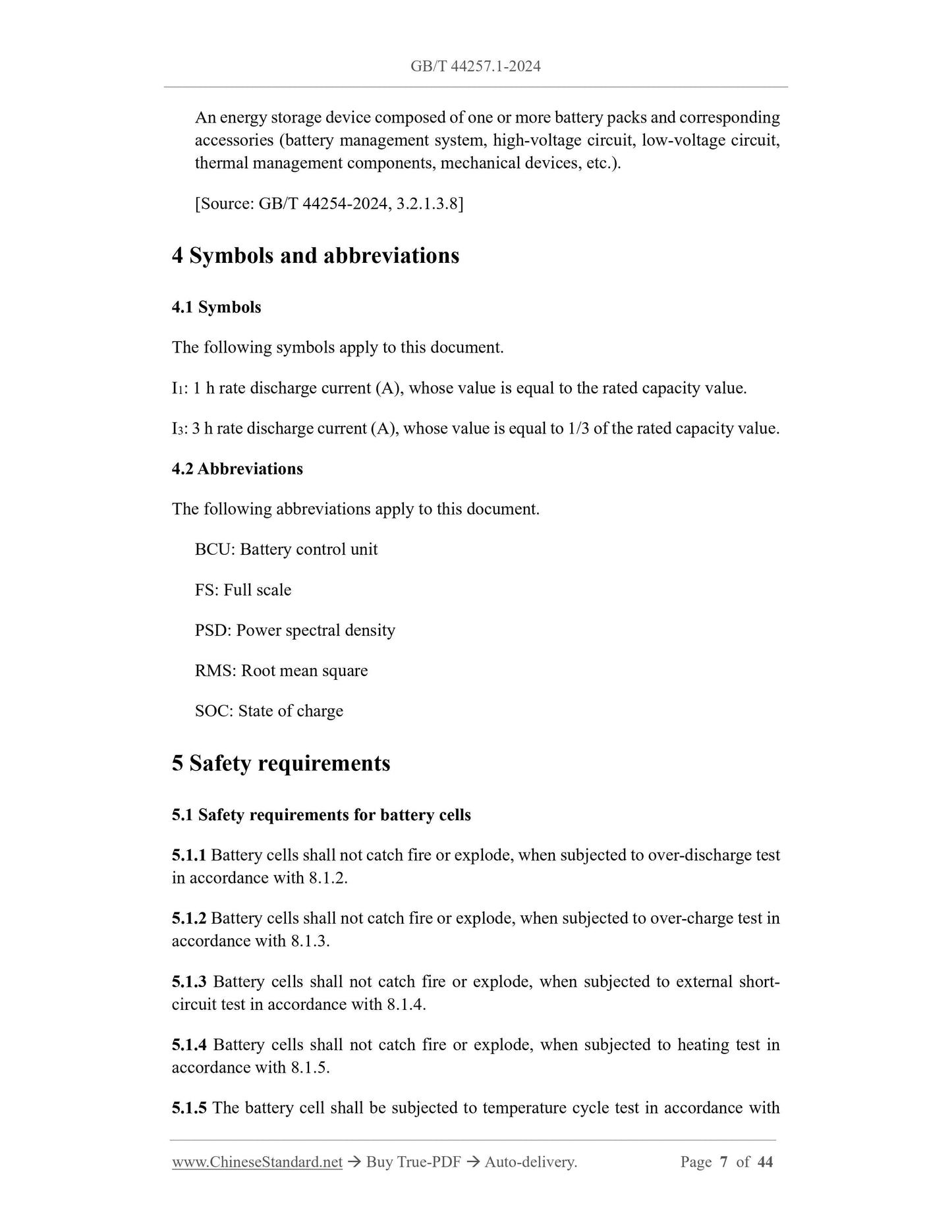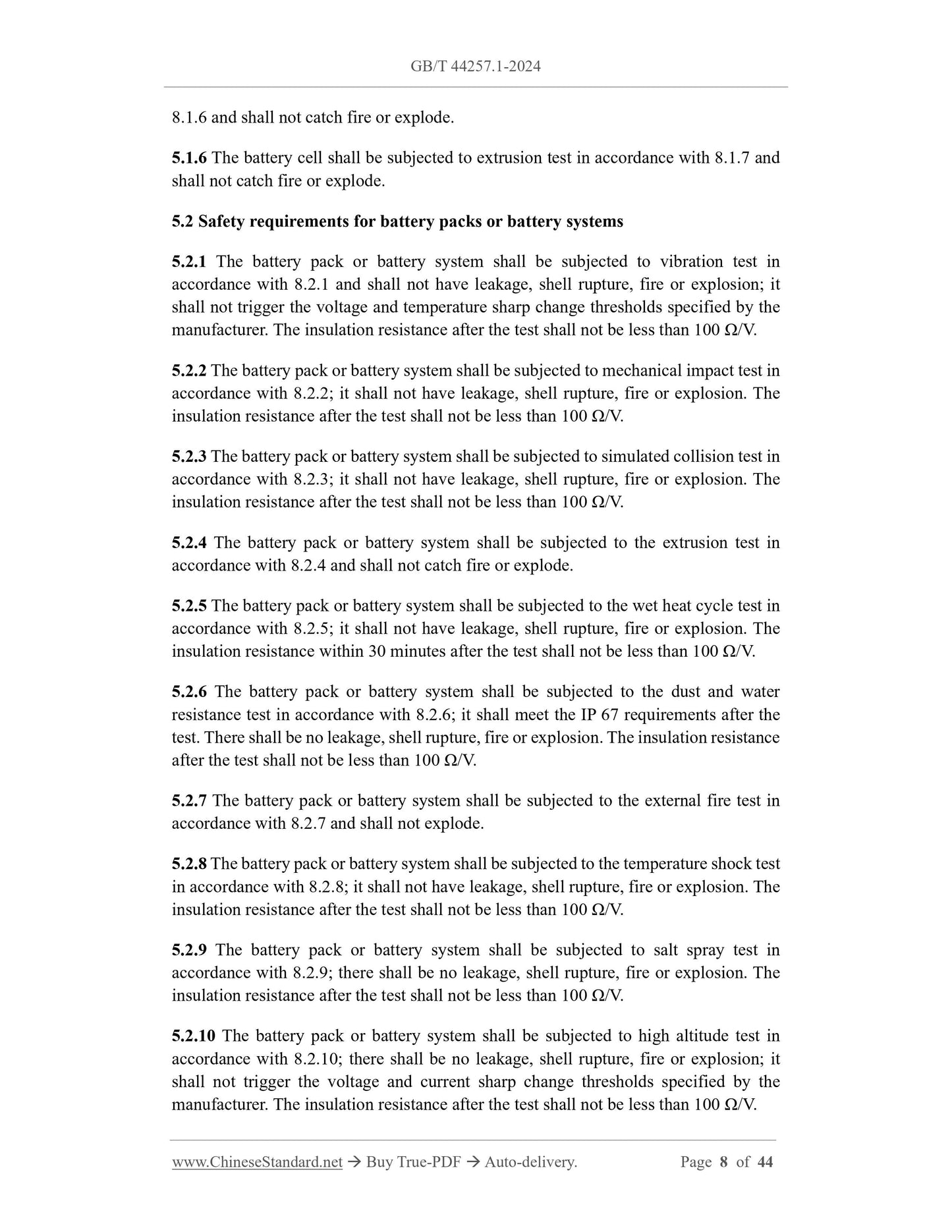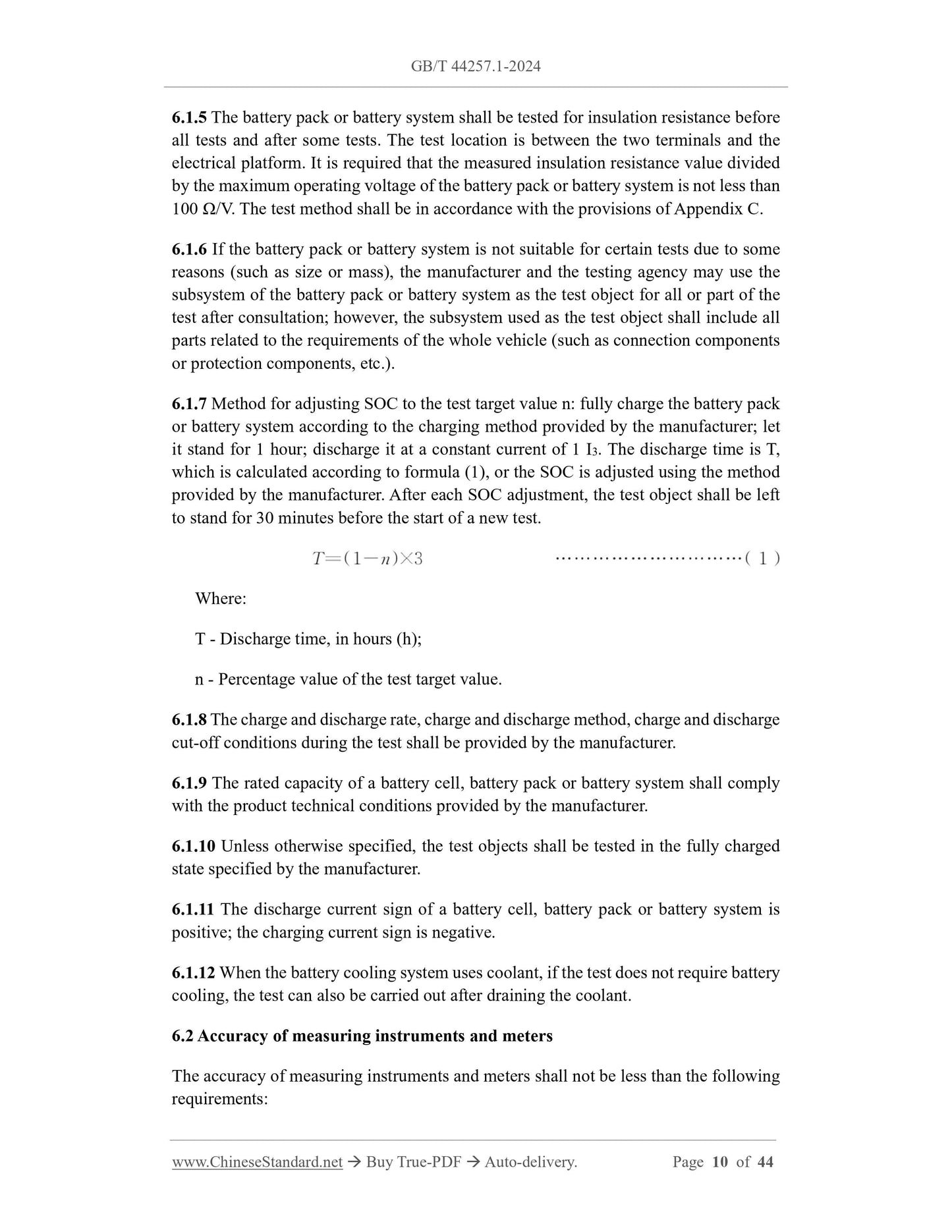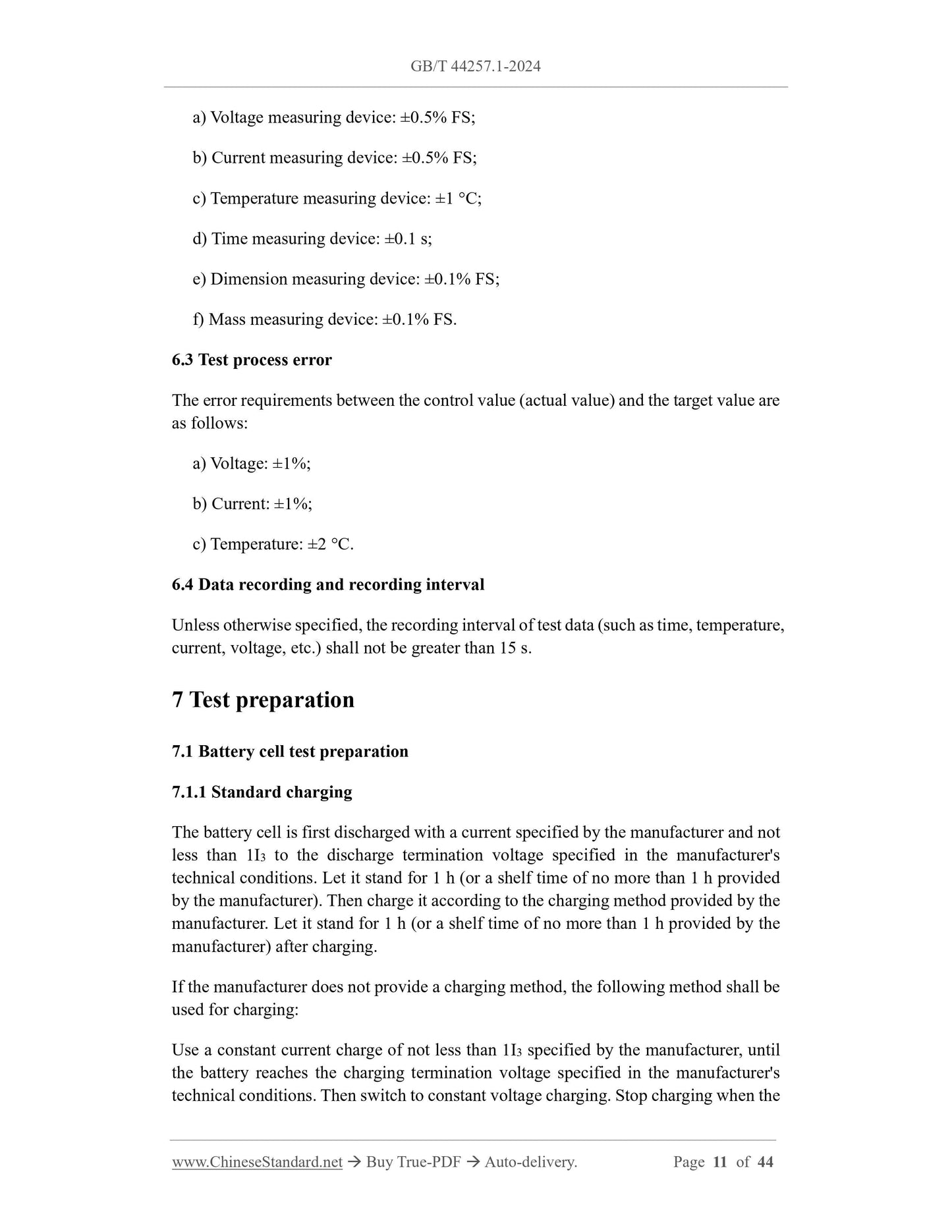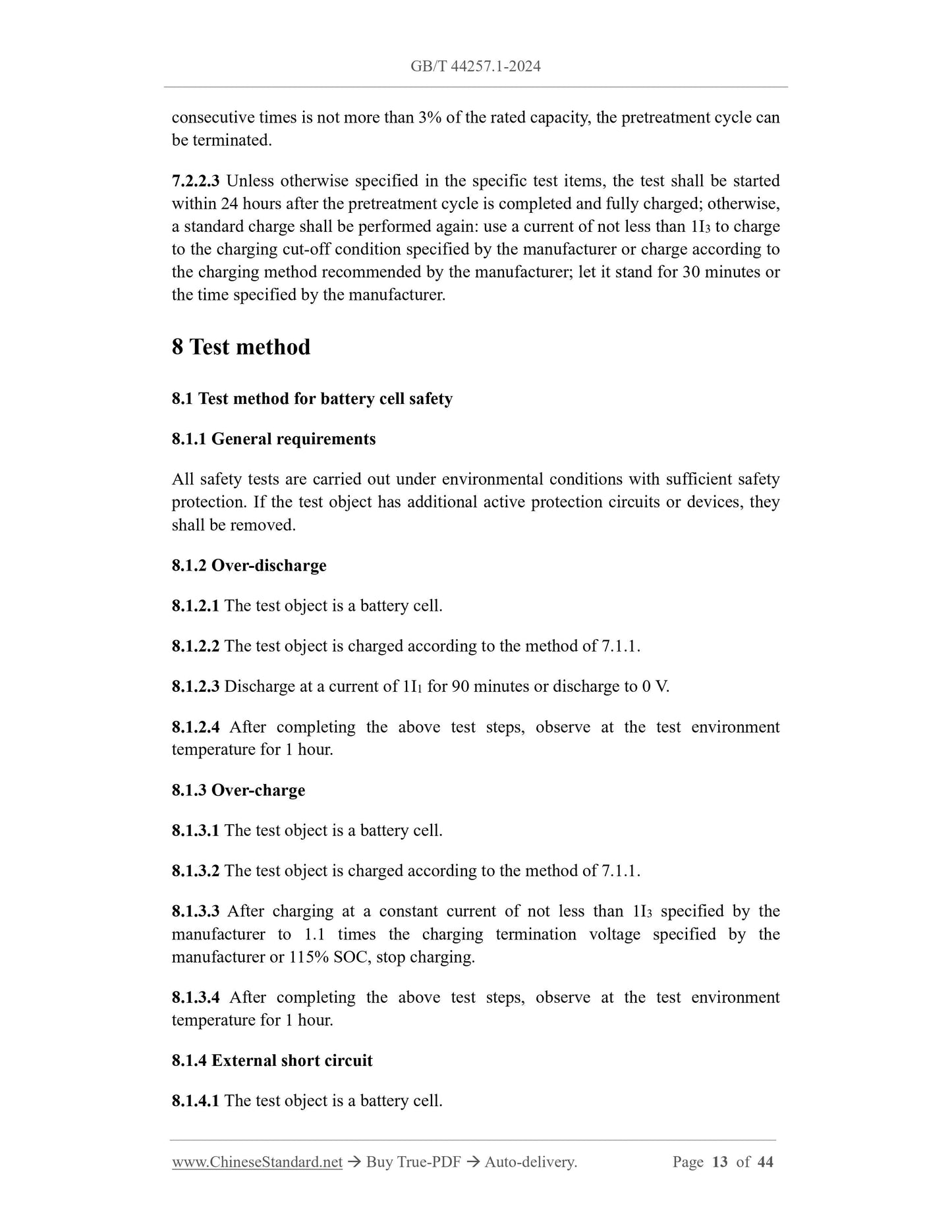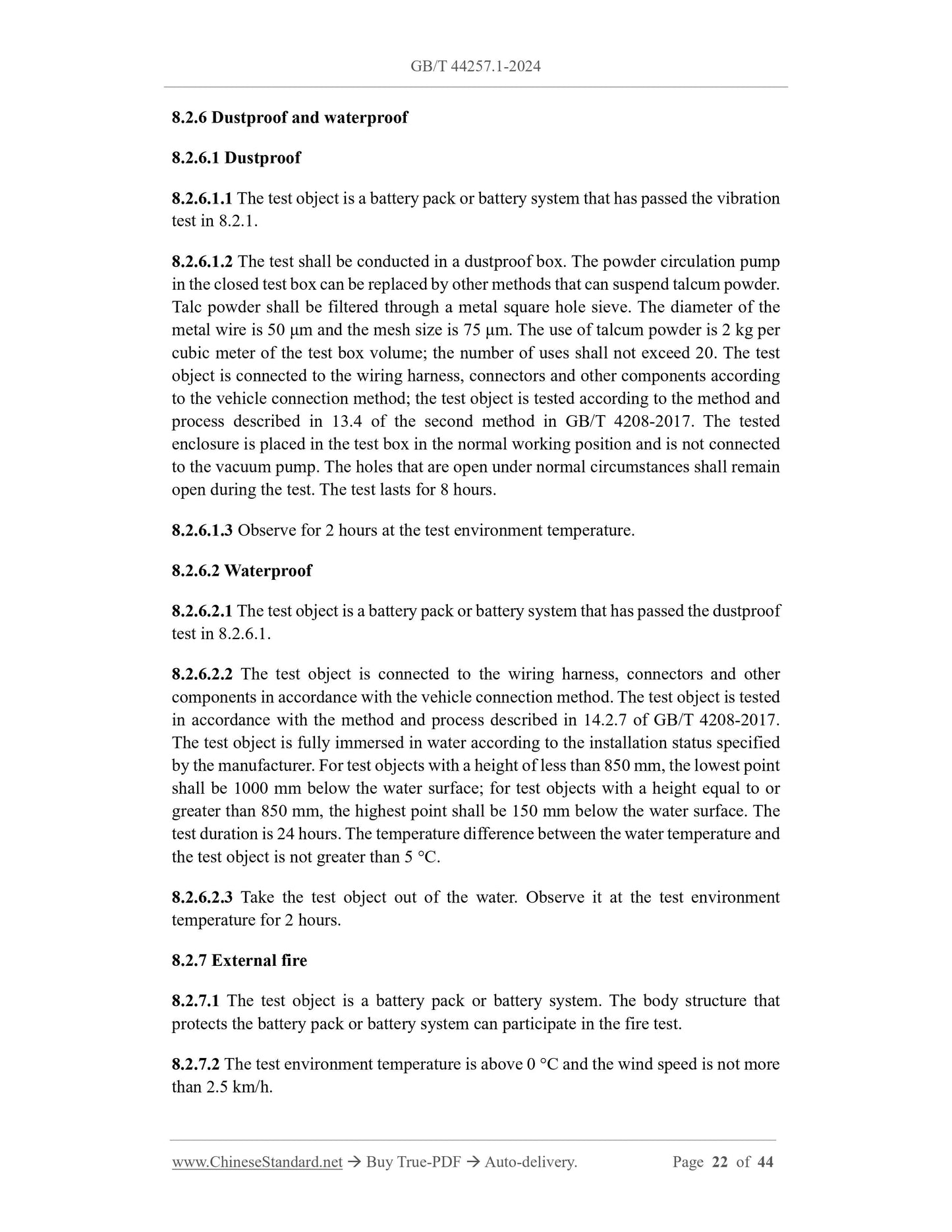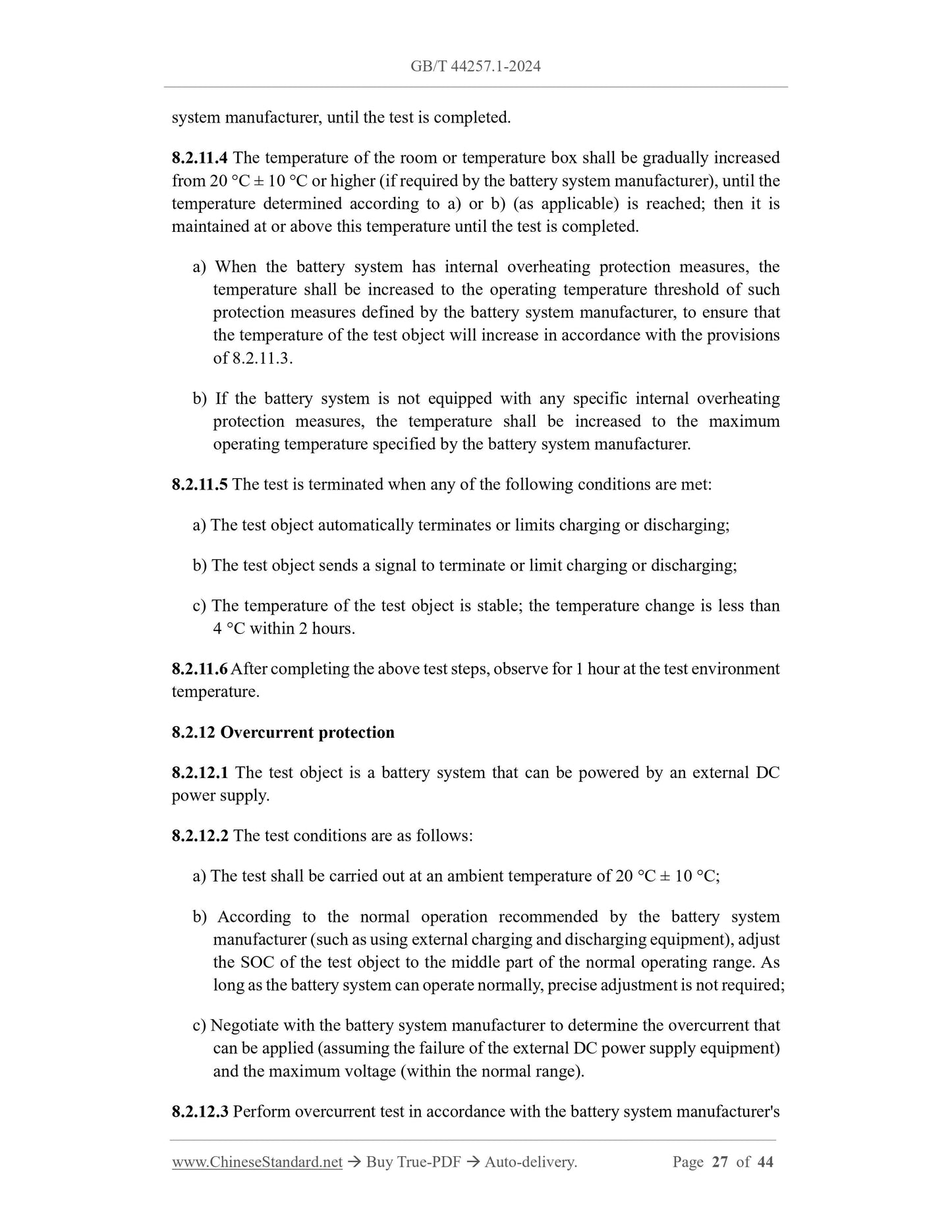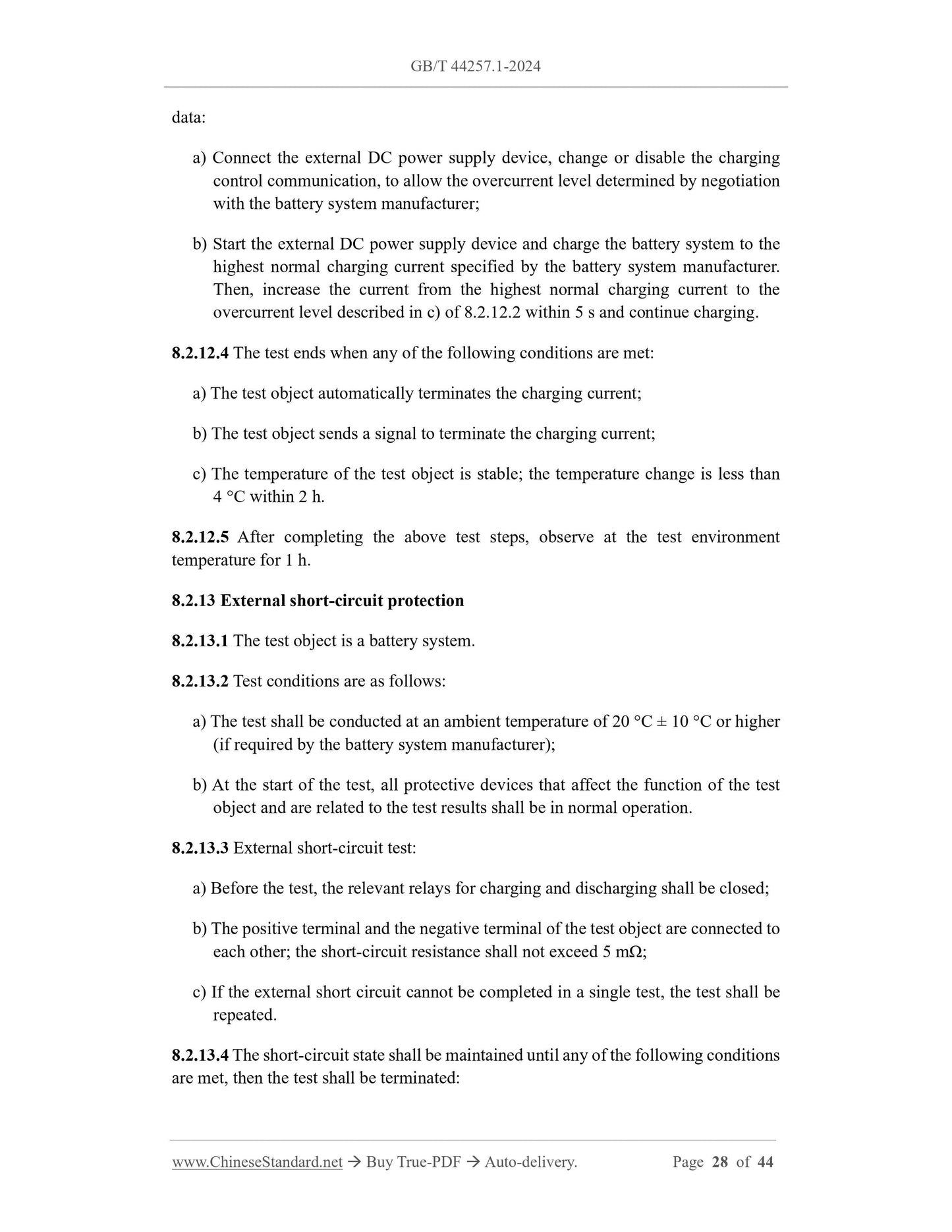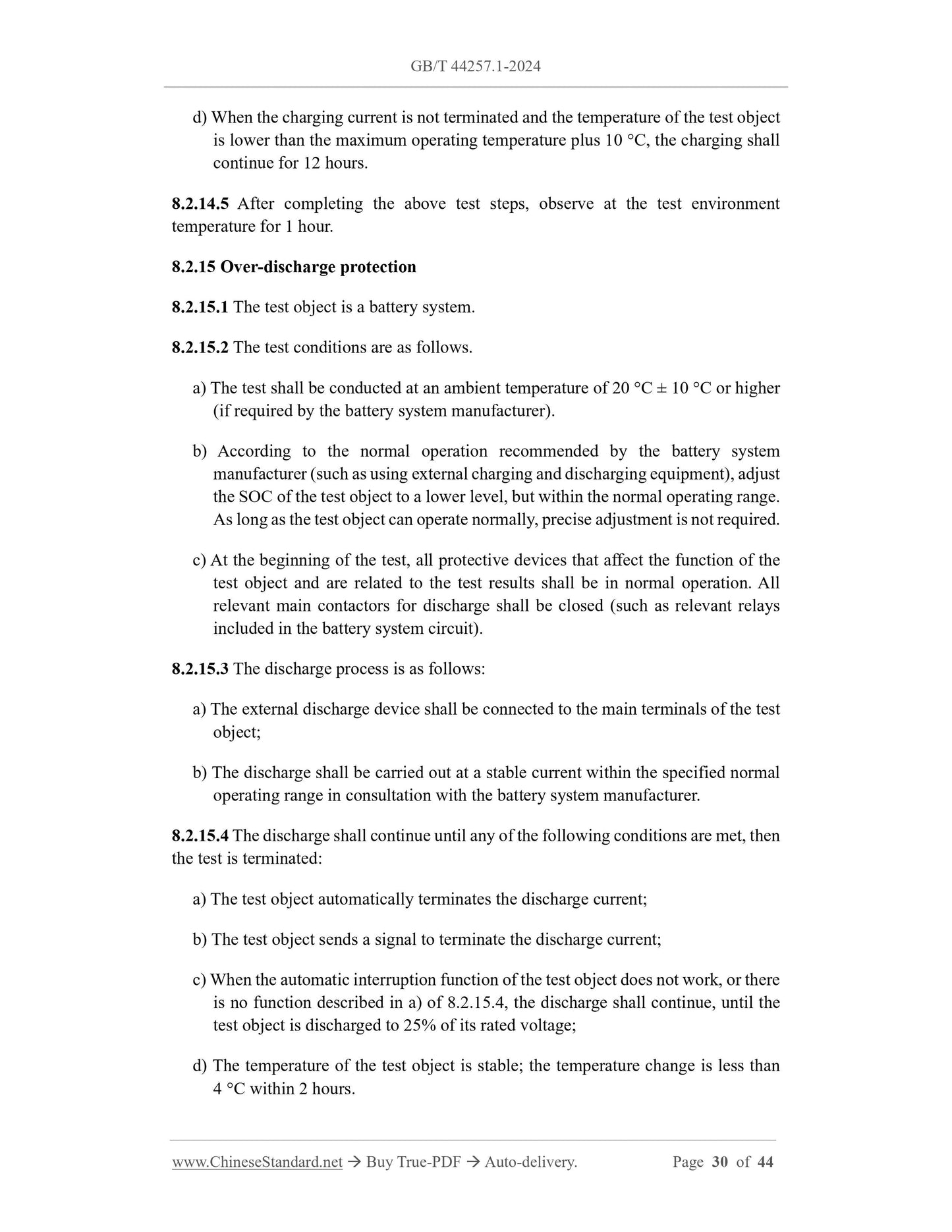1
/
of
12
www.ChineseStandard.us -- Field Test Asia Pte. Ltd.
GB/T 44257.1-2024 English PDF (GB/T44257.1-2024)
GB/T 44257.1-2024 English PDF (GB/T44257.1-2024)
Regular price
$575.00
Regular price
Sale price
$575.00
Unit price
/
per
Shipping calculated at checkout.
Couldn't load pickup availability
GB/T 44257.1-2024: Traction battery of electric earth-moving machinery - Part 1: Safety requirements
Delivery: 9 seconds. Download (and Email) true-PDF + Invoice.Get Quotation: Click GB/T 44257.1-2024 (Self-service in 1-minute)
Newer / historical versions: GB/T 44257.1-2024
Preview True-PDF
Scope
This document specifies the safety requirements for power battery cells, battery packsor battery systems for electric earthmoving machinery; describes the relevant test
methods.
This document is applicable to the manufacture of power lithium-ion batteries for
electric earthmoving machinery; the manufacture of other types of power batteries is
implemented with reference to it.
Basic Data
| Standard ID | GB/T 44257.1-2024 (GB/T44257.1-2024) |
| Description (Translated English) | Traction battery of electric earth-moving machinery - Part 1: Safety requirements |
| Sector / Industry | National Standard (Recommended) |
| Classification of Chinese Standard | P97 |
| Classification of International Standard | 53.100 |
| Word Count Estimation | 34,365 |
| Date of Issue | 2024-07-24 |
| Date of Implementation | 2024-07-24 |
| Issuing agency(ies) | State Administration for Market Regulation, China National Standardization Administration |
Share
